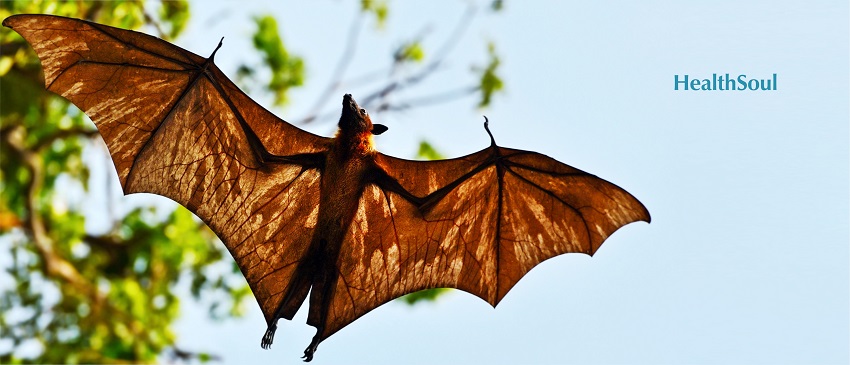5 Diseases You Can Get from Bats

Many people throughout the world do not like bats for many reasons. Setting aside the fact that almost everyone finds them hideous to look at, there is something more sinister within bats. Bats are mammals that have forelimbs adapted as wings; as such, they are the only mammals that are naturally capable of sustained flight. Within the United States, there are more than 40 species of bats — they are found in every state of the U.S. and live in different habitats ranging from woodlands and deserts to suburbs and cities to your backyard.
These “flying rats” are known to carry more than 60 viruses that can be transmitted to humans, making them even more disease-ridden than rats and mice. There are many classifications of viruses in the world, and bats carry many of what are called “zoonotic viruses”. Put simply, these zoonotic viruses can be spread to other species by the bats. If you do come in contact with a bat in your home, it’s important to get rid of bats right away to keep you and your family safe from the dieses below.
Continue reading for a detailed, and slightly terrifying, look at the diseases a bat can carry.
Ebola
Most bats don’t have rabies, but the common source of human rabies in the United States is from bats. Rabies is a fatal disease. Each year, tens of thousands of people are successfully protected from developing rabies through vaccination after being bitten by an animal like a bat that may have rabies. Just looking at a bat, you can tell if it has rabies. Rabies can only be confirmed in a laboratory. But any bat that is active by day or is found in a place where bats are not usually seen like in your home or on your lawn just might be rabid. A bat that is unable to fly and is easily approached could very well be sick.
Rabies
Ebola. Even saying the word of the virus is nerve-wracking. This disease, native to Africa, has killed over 11,000 people. This death toll does not seem super high compared to the most recent COVID-19, but Ebola is much more deadly than the coronavirus. It kills roughly 50-60% of the people it infects, making it such a deadly virus, as there is not a single cure or treatment that has been discovered. While it is unlikely that an Ebola-ridden bat will be located in the United States, there is always a chance, however slight.
Coronavirus
The coronavirus family is made up of several different varieties. One of the first coronaviruses the world has known was SARS. The SARS outbreak of 2002 claimed the lives of around 800 people around the globe. As tragic as SARS was, it pales in comparison to the COVID-19 pandemic. COVID-19 is a strain of the coronavirus that has spread unstoppably all around the globe since it got its start in the Wuhan province of China. The finger is pointed by many health officials at the disease-ridden bat. Simply put, this outbreak more than likely would not have occurred had humans not interacted with bats. Whether the bat origin story is made up or not, it is very possible, which is why it is so important to not interact with bats at all!
Marburg
Marburg is one of the scariest diseases in the world, as it causes hemorrhagic fever and has a fatality rate of 88%. Ebola and Marburg come from the same family of viruses, however, Marburg’s origin began in Germany. This disease initially spread through imported African monkeys, but the latest cases have been caused by bats. These bats infected two hikers that explored caves in Uganda. Again, while it is unlikely that bats in the U.S. will be carrying Marburg, it is always a possibility.
Nipah
A virus that has stayed contained mainly in Asia, Nipah is most commonly spread by pigs and bats. Nipah virus is a zoonotic virus (it is transmitted from animals to humans) and can also be transmitted through contaminated food or directly between people. In infected people, it causes a range of illnesses from asymptomatic (subclinical) infection to acute respiratory illness and fatal encephalitis. Nipah causes death in between 40-75% of cases, making it a very deadly disease, as it has no known cure. It causes seizures and respiratory problems. Again, Nipah probably isn’t carried by bats in America, but one can never be too careful.
Bats are nasty creatures to many of us based purely on their looks. Looks aside, there are many more reasons to stay away from bats. Don’t ever try to handle a bat, and you will reduce your risk of catching a zoonotic virus from one of these creatures. To prevent future outbreaks of bat viruses, we need to study the interactions between bats, humans and domestic animals and identify factors that are making bats come into contact with humans and domestic animals, and try to do something about it.

